Details of the extremely successful testing of advanced detectors at the accelerator in Cologne
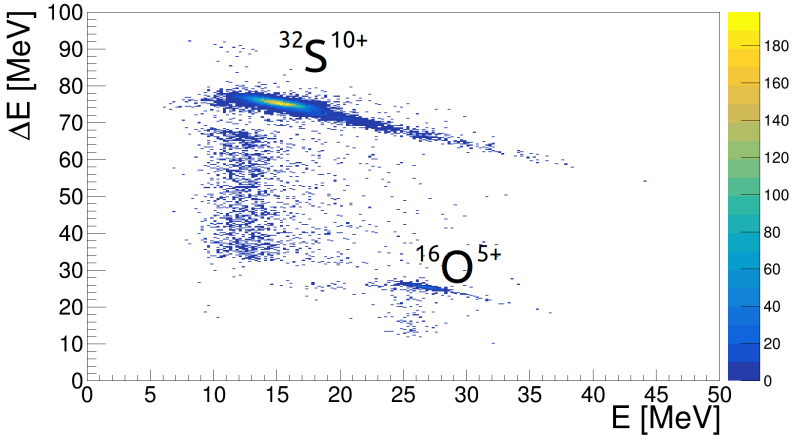
At the end of October, the F2 department staff (Klemen Žagar, Matevž Skobe, Matjaž Vencelj and Gregor Košir) participated in the test of the HISPEC-10 detector setup at the 10MV tandem accelerator of the Institute for Nuclear Physics IKP (German: Institut für Kernphysik) at the University of Cologne. In the picture below from left: Gregor Košir, Dennis Bittner, Matevž Skobe, Jan Jolie, Kathrin Wimmer, Calum Jones, Klemen Žagar and dr. Matjaž Vencelj.
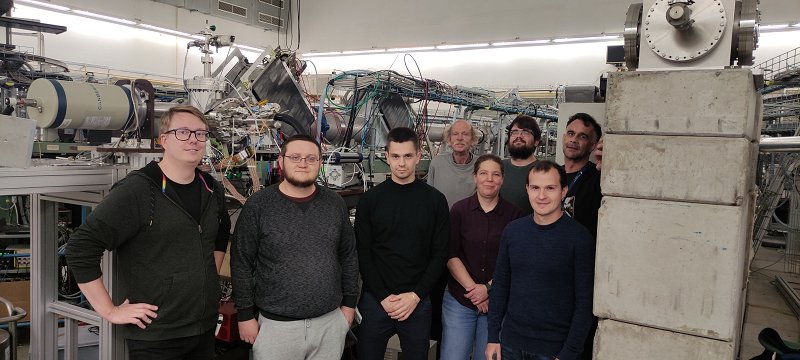
The HISPEC-10 (High-resolution In-flight SPECtroscopy 10) experiment will be located at the new accelerator of the European Centre for Antiproton and Ion Research FAIR and will be used to study highly excited states of slowed exotic ions. The core of the experiment is formed by a system for measuring the time of flight based on MCP microchannel plates and a system for measuring the dE-E kinetic energies of excited ions (the scheme of the experiment is in the figure below). The latter is being developed at F2 and our prototype consists of two segmented silicon DSSSDs (Double Sided Silicon Strip Detectors), the first of which is 20um thick and the second 300um thick.
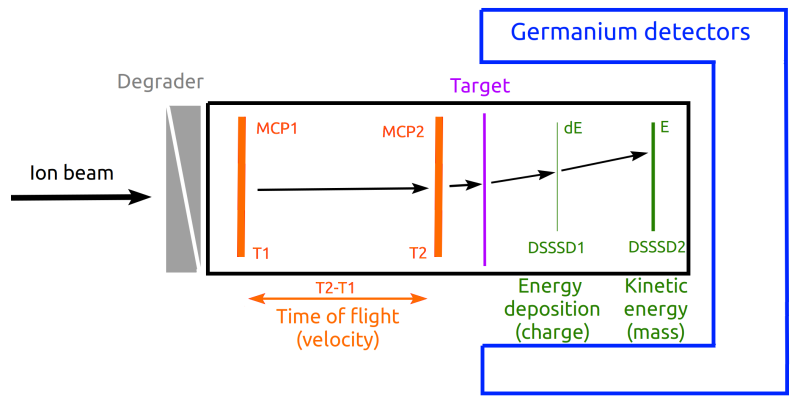
The main challenges of the HISPEC-10 experiment are the introduction of unwanted isotopes during beam focusing and the Doppler shift of the measured gamma rays, which are produced by the decay of excited states before the ion is stopped. The solution is to use position-sensitive detectors to measure the beam trajectories and identify individual ions, for which we need mass and charge. To determine the mass, we measure the velocity and kinetic energy of the particle, which are determined from the time of flight of the MCP detectors and the deposited energy in the silicon detectors. The charge is determined from the energy losses (dE/dx) with a thin DSSSD. Photo of the setup below.
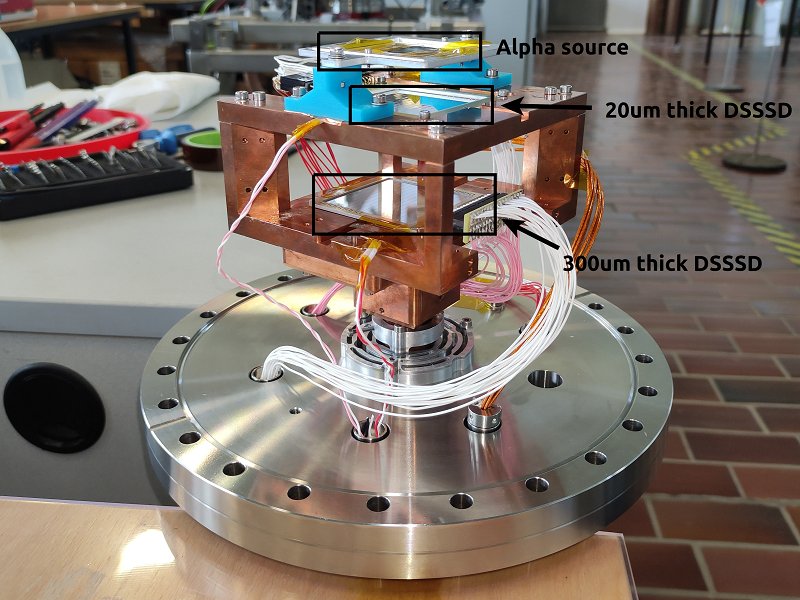
At the Cologne accelerator, we used a sulfur beam at an energy of 100 MeV to characterize the detector setup, photo of the line below.
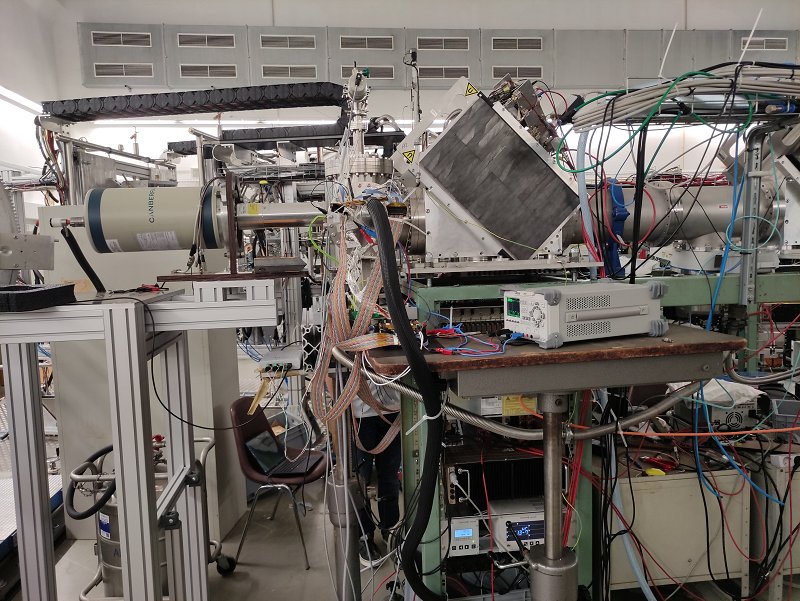
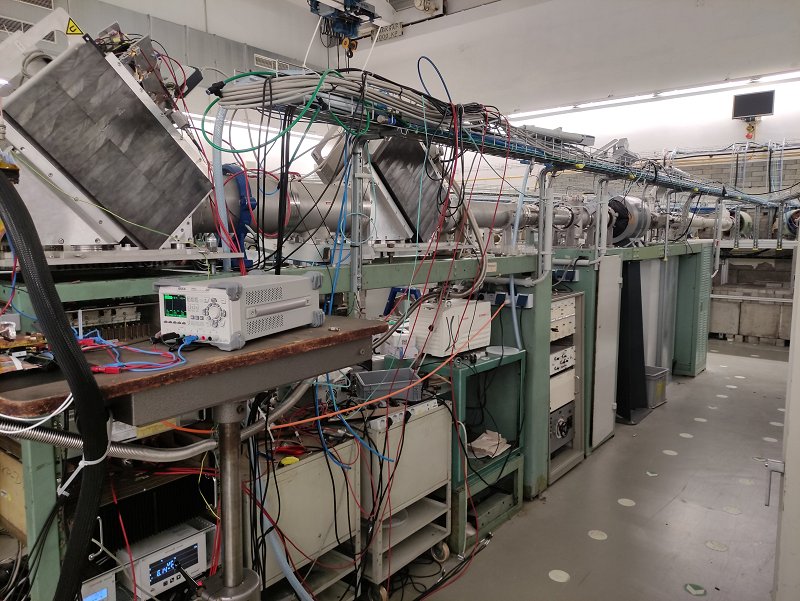
Initial analyses of the obtained measurements indicate the success of the dE-E detector, as the detector operated with an energy resolution of about 2% (FWHM/E) and a time resolution (sigma) of 300 ps per individual detector channel (the picture below shows the distribution of the time difference between events in two channels on a 20 um thick DSSSD).

With such properties, the detector is suitable for measurements of intermediate mass ions. The dE-E detector also performed the first particle identification, as we managed to detect oxygen contamination of the beam, image below.
